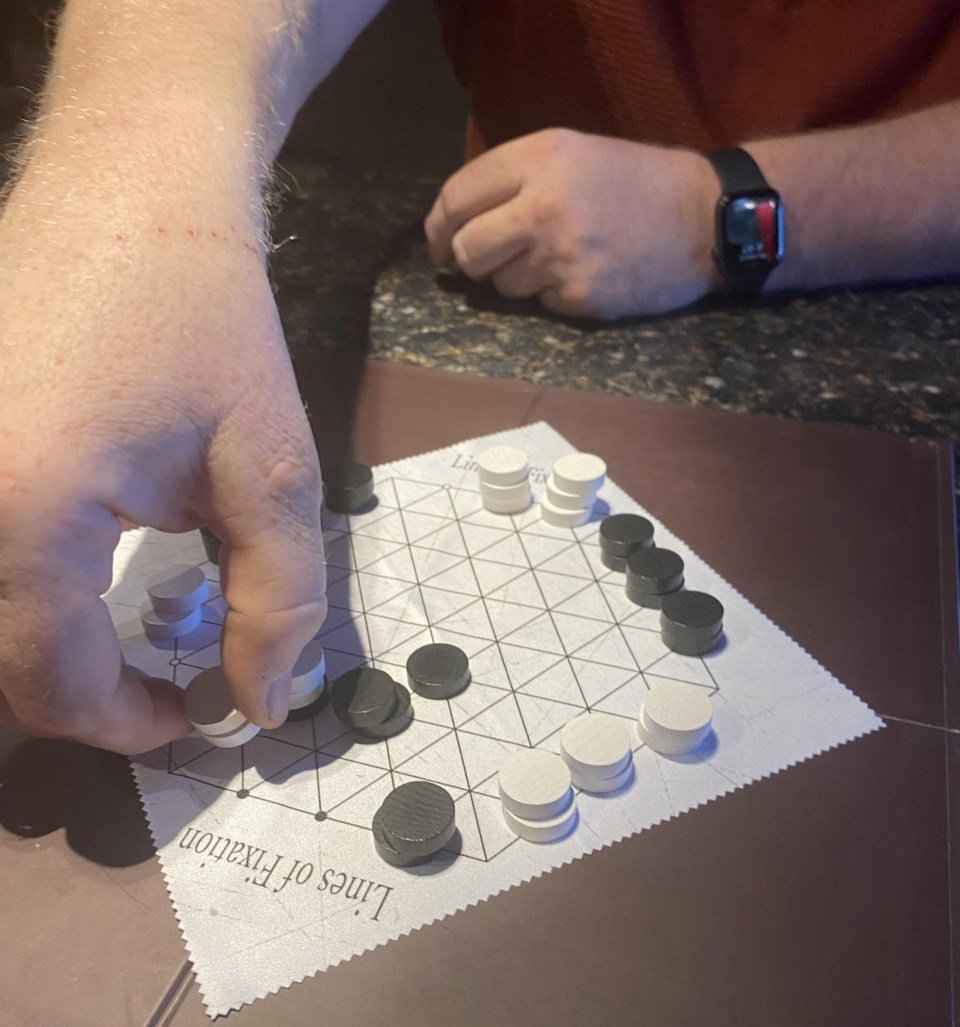YORKTON - When the tiny box containing Lines of Fixation arrived I was immediately excited.
Lines of Fixation is an abstract strategy game for two-players, created by Kanare Kato in 2022, and inspired by Lines of Action (LoA).
Now LoA is among my favourite games based on a couple of simple factors. To start it was created by a Canadian and I always like to be proud of my country in supporting games created here – in this case by Claude Soucie in 1969.
Secondly, LoA is remarkable simple in terms of rules—and is played on a basic 8x8 checker board with just 12 checkers each, but still offers depth of play I rate a bit ahead of checkers.
The game of LoA has inspired before too, being the core inspiration for Fields of Action by Sid Jackson in 1982.
So in the case of Lines of Fixation the goal is much the same as Soucie’s classic.
Several game pieces start situated around the play area – in this case a hexagonal board -- with the object to unite your pieces in a single connected group.
There are of course some restrictions in terms of movement, and with Lines of Fixation there is also a stacking mechanic.
Each player starts with nine two-height stacks. Players alternate turns making one move with a stack they control - a stack with your color at the top.
Stacks move a straight line the distance exactly its height, dropping bottom disks exactly one by one for each hex. It is a seeding mechanism mancala players will be familiar and comfortable with.
Dropped disks may capture opponent's stacks and/or merge with own stacks.
If you have a mono-color stack of three, or more pieces and it can make a capture, you must do so – which has a very checker-esque feel to it.
There are restrictions.
If you do not have the highest stack on a straight line, your stacks on the line cannot make any move along the line.
And if both you and your opponent have the highest stacks of same height on a line, your stacks on the line can move and merge but cannot capture.
The above two restriction certainly add an additional ‘think’ factor to Lines of Fixation.
The object is to make all stacks you control adjacent each other as a group, but in another neat twist, you can also win by having two mixed-colour stacks of six-height – your colour on top obviously.
Kato has done a real nice job of adding some interesting depth to what remains solidly LoA in terms of the game’s heart.
So is LoF better than LoA?
Yes and no.
LoA edges ahead because it is so easy to learn and can be played with a checker set most have – and if you have not tried it, search out the rules and try it – it is a classic.
With LoF there is more to digest and learn – call it depth if you will – that really should be explored too.
Both have merit for sure and certainly LoF is worth grabbing because it is different enough from LoA to be quite a new play experience.






